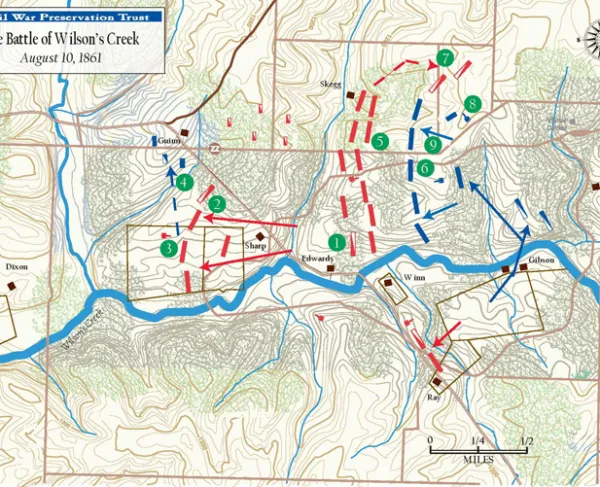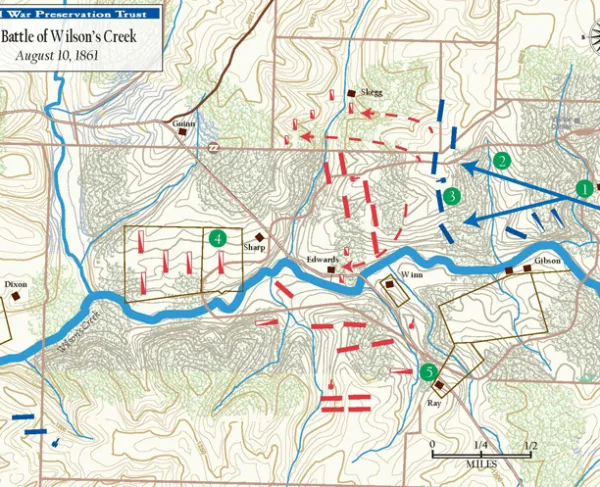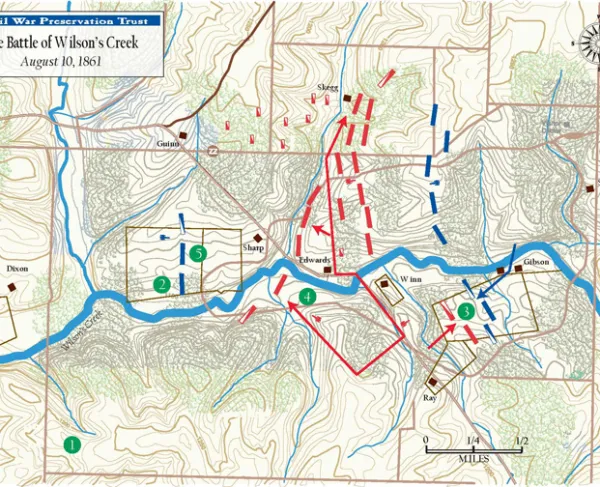The Battle For Wilson's Creek
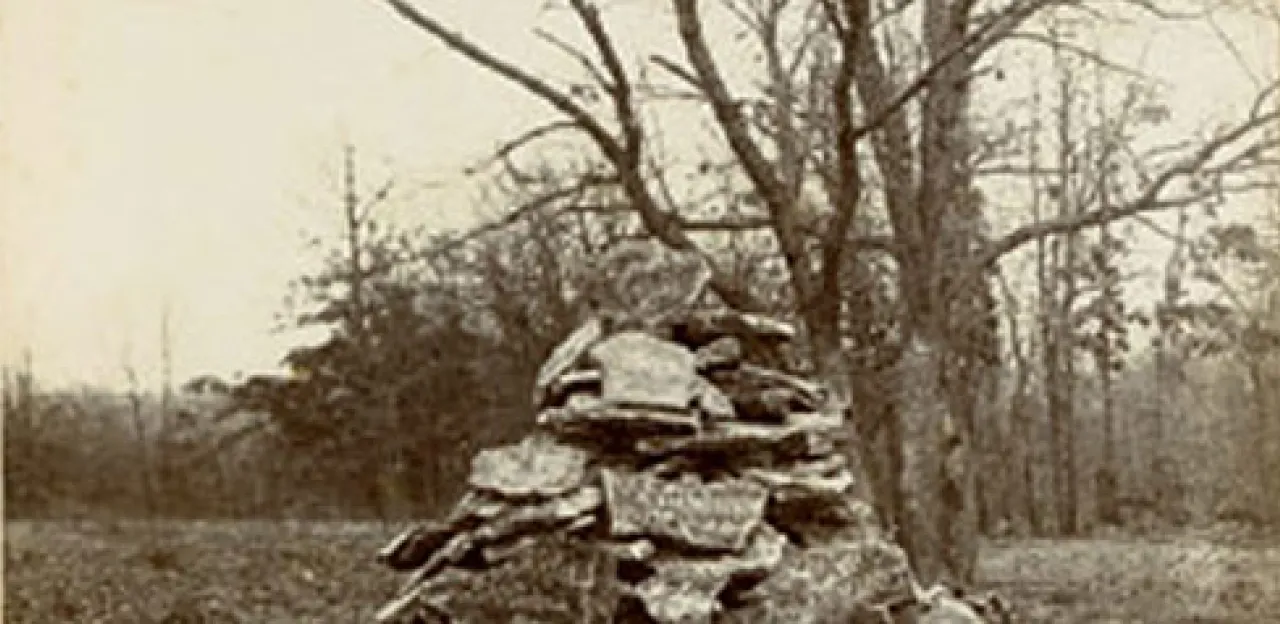
The Battle of Wilson’s Creek may have taken only six hours on a hot August morning, but the Battle FOR Wilson’s Creek wasn’t resolved for a century, when — after much effort — the battlefield became a unit of the National Park System.
On December 24, 1861, just four short months after the battle, Congress passed a joint resolution honoring Union general Nathaniel Lyon and all who had fought at Wilson’s Creek, one of only five such resolutions passed during the entire Civil War. It stated, in part:

“... the thanks of Congress are hereby given to the brave officers and soldiers who, under the command of the late General Lyon, sustained the honor of the flag and achieved victory against overwhelming numbers at the battle of Springfield, Missouri; and that, in order to commemorate an event so honorable to the country and to themselves, it is ordered that each regiment engaged shall be authorized to bear upon its colors the work ‘Springfield.’ Embroidered in letters of gold; and the President of the United States is hereby requested to cause theses resolutions to be read at the head of every regiment in the army of the United States.”
After the war, veterans began gathering on the battlefield for reunions, piling rocks on the spot where they remembered General Lyon receiving his fatal wound — although scholarship suggests this was more likely the spot where Lyon’s horse was shot from under him — the gesture demonstrates immense regard for their fallen commander. At one reunion, the veterans adopted a formal resolution asking Congress to memorialize the battlefield. This was the first effort in what turned out to be a nearly century-long struggle to commemorate the Battle of Wilson’s Creek.
In 1928, The University Club of Springfield erected the first — and still only — marker on the battlefield. Located on Bloody Hill, in the area of the by-then dwindling rock pile, the marker reads:
“At or near this spot fell Brigadier General Nathaniel Lyon ... In honor of General Lyon and the hundreds of brave men, North and South, who on this field, died for the right as God gave them the right.”
Recognizing that the Battle of Wilson’s Creek was a significant part of their history, local citizens formed a committee for the memorialization of the battlefield in 1927. They quickly secured $2,000 from the Springfield Chamber of Commerce and called upon local 7th District U.S. Rep. Samuel Major for assistance. Governmental support also came from Secretary of War, Dwight F. Davis, who insisted that Wilson’s Creek be included in any plans to memorialize Civil War battlefields, as he felt it met all requirements for historical, military and social significance. Meanwhile, at the prompting of U.S. Sen. Champ Clark, the U.S. Army War College reclassified the battlefield from the lowest category of importance to the next higher level. In 1938, a bill was pushed through the Missouri legislature calling for $10,000 for the purchase of battlefield land. It was vetoed by the governor, who felt that the amount was inadequate for the purchase of the significant battlefield land.

Commemoration efforts stalled during World War II, but returned with renewed vigor following its conclusion. In 1950, the nonprofit Wilson’s Creek Foundation was chartered and soon set about purchasing a portion of the battlefield as a trustee. Rather than count on the support of wealthy private donors, the Foundation instituted a “Penny Brigade,” allowing people from all walks of life to contribute to the campaign. Local school children brought their nickels and pennies in to school to help the cause, and several direct descendants joined in preserving the battlefield where their ancestors had fought and died. In the fall of 1951, the Foundation closed on a 37-acre parcel on Bloody Hill. For the first time in 90 years the public could visit the battlefield without trespassing.
Next, the Foundation created a steering committee to guide the work of lobbying Congress for the establishment of Wilson’s Creek as a unit of the National Park Service, as well as a federal appropriation to assist in purchasing additional land. The Foundation continued to purchase battlefield land, until it had gradually amassed some 1,700 acres, which were held by the State of Missouri.
Initially, the National Park Service did not wish to establish a park at Wilson’s Creek. After the creation of Pea Ridge National Military Park in 1956, the agency felt it had sufficient presence in the Trans-Mississippi region of Arkansas and Missouri. But Wilson’s Creek had a strong advocate in young National Park Service historian Ed Bearss, who performed the initial boundary surveys for both Pea Ridge and Wilson’s Creek. Bearss’s support and the Foundation’s persistence eventually paid off when President Dwight Eisenhower signed the bill creating Wilson’s Creek National Battlefield in 1960.
Although an official unit of the National Park System, the Wilson’s Creek National Battlefield of the 1960s and 1970s was a far cry from the park that visitors enjoy today. For many years, there were no visitor services at the park — neither visitor center nor interpretive trails. Eventually, simple wooden signs carved with the park’s name were added, and a single wide trailer began to serve as a visitor center. On-site staff was limited to a single interpreter and one maintenance employee, serving under the direction of the Superintendent of George Washington Carver National Historic Site in Diamond, Mo., some 70 miles distant.
As visitation steadily increased, the park undertook several new developments and park-wide improvements. Completed in 1980, the new 6,400-square-foot Visitor Center housed an electric map program, introductory film and interpretive exhibits. Throughout the decade, the park was able to remove all post-war additions to the Ray House, which served as a hospital during the battle, restoring its appearance to that of August 10, 1861. After managing to close all of the country roads running through the park, a 5-mile-loop Tour Road with eight interpretive stops was dedicated in April 1987. The park’s extensive library, called the Hulston Collection in memory of principle donors John and Ruth Hulston, was established in 1985 with 2,500 volumes housed in the Visitor Center.
Throughout this strong period of growth and development, the Wilson’s Creek National Battlefield Foundation was far from idle. The Foundation assisted the park by raising funds for a picnic pavilion, cannon carriages and other necessities. As the park’s staff and library and archival holdings continued to grow, the Foundation worked to secure funding for a major addition to the existing Visitor Center. In April 2003, the 7,200-square-foot library annex was dedicated.
In 2005, the combined efforts of the Park Service and the Foundation secured the purchase of General Sweeney’s Civil War Museum. With nearly 10,000 artifacts, the gallery was widely regarded as one of the most outstanding private Civil War artifact collections in the world. Previously owned by descendents of the eponymous general, who was a veteran of both the Mexican and Civil Wars, the museum’s acquisition was the first expansion of the park undertaken following passage of the Wilson’s Creek National Battlefield Boundary Adjustment Act of 2004.
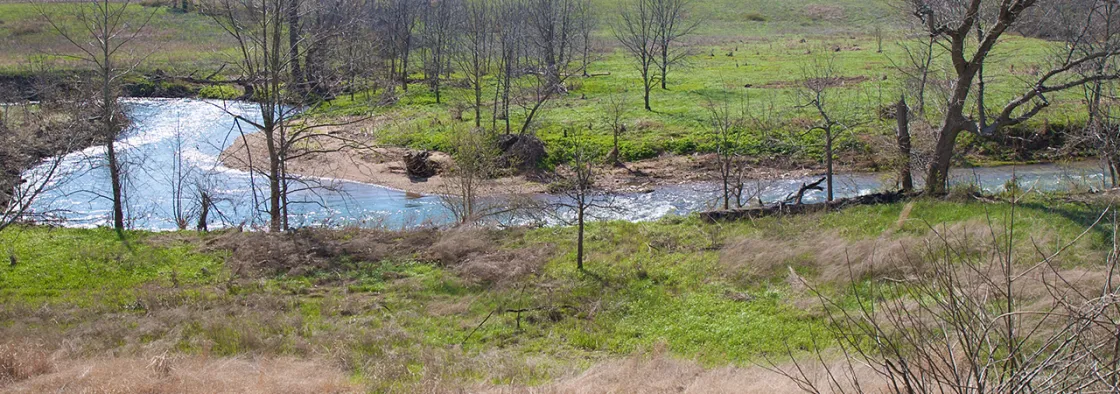
Edwin Bearss — the young ranger who initially surveyed the battlefield in the 1950s as part of a Park Service career that culminated with a position as chief historian — once referred to efforts at telling the story of Wilson’s Creek as a three-legged stool resting on the battlefield itself, the library documentation and the museum artifacts.
Efforts to protect and preserve Wilson’s Creek continue to this day. In recent years, the Foundation has been instrumental in the protection of four distinct historically significant properties adjacent to the park — two through outright purchase and two more through conservation easements. While development pressures at Wilson’s Creek have not been as intense as at other battlefields, growth of the surrounding community, despite its enthusiastic support of the battlefield, continues to be a concern. In the last five years, a large housing development was slated for land directly west of current park boundaries and a brand new high school was built north of the park’s northern boundary. State Highway ZZ, also known as Wilson’s Creek Boulevard, has been expanded to accommodate the larger volume of traffic generated by the high school.
Related Battles
1,235
1,095
